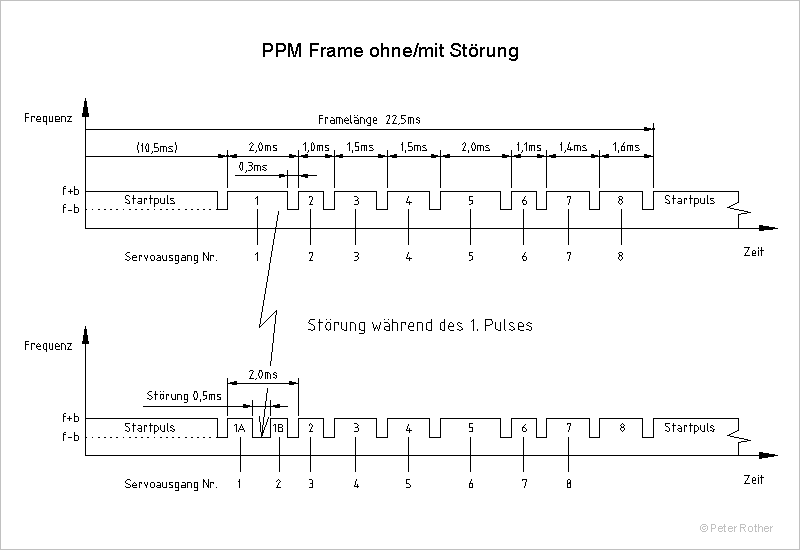|
PPM Advantages
Our servos use 3 connection wires: plus,
minus and pulse.The pulse connection uses exactly the same 1-2ms
servopulse as generated by the transmitter, meaning the complete transmission chain is transparent. The representation of the information is not
altered.Therefore transmitter and receiver can get by without processor,the
only possibility in the past. That way they can be easily built,
small and cheap.
There should be no problems using different makes of receivers
with transmitters from other manufacturers. Every 22.S-ms-Frame
contains the complete servo position. Transmisson is fast enough
to operate even the quickest of servo's. With PPM ,the end of
the transmission range is shown by the servo's starting to move
erratically. When the pilot starts to notice this( control movements
are no longer transferred correctly), he could probably still get his model back home safely. Momentary signal losses get ironed out by
the model's inertia.
Disadvantages
Due to its simplicity, PPM transmission cannot detect errors,
the receiver does not see the difference between valid and invalid
servo pulses. It starts counting after every starting
pulse and , for example, steers
the 7th pulse toward the 7th servo exit.
If there is a short glitch (0.5 ms), halving the first servopulse,
two undersize, faulty pulses appear, going to exits 1 and 2. The second pulse ,
that was unaltered, goes to exit 3 etc. If the glitch is long
enough (>30 ms), it could be seen as a starting pulse and
pulse counting in the receiver starts at an arbitrary channel.
This can only get corrected in the next frame. When the range
boundaries are reached, pulses get slightly longer or shorter
because of noise. Servos start to move
eratically. The same thing happens
when antenna orientation is not optimal, when the projection
of the receiver antenna is nearly down to a single point, the
signal breaks down and the servo's get false
pulses. These short glitches go
unnoticed most of the time because they are smoothed out by the
servo's inertia( "slowness").

Translation to the picture:
Störung - distortion
ohne/mit - without/with
Störung während des 1.Pulses - distortion during 1st
pulse
Servoausgang - servo output |